- Home
- A. S. Byatt
The Biographer's Tale Page 2
The Biographer's Tale Read online
Page 2
The most exciting of these translations—Destry-Scholes certainly thought so, and conveys the excitement—was his version of the travels of the seventeenth-century Turkish traveller, Evliya Chelebi. Elmer Bole’s translation included those passages expurgated by the Ritter Joseph von Hammer, the first Western translator, who had felt it proper to omit, for instance, Evliya’s initiation into “all the profligacies of the royal pages, the relation of which, in more than one place, leaves a stain upon his writings.” Bole had also followed Evliya through bath-houses where the Ritter had stopped at the door. Evliya Chelebi had, it appears, had a vision of the Prophet, in his twenty-first year, in which, stammering as he was, blinded by glory, he had asked, not as he meant to, for the intercession of the Prophet (shifaa’t) but for travelling (siya’hat). Travelling had been granted, in abundance. Elmer Bole, undertaking his dangerous journeys disguised as a Turkish bookseller, had used Evliya’s other name, Siyyah, the Traveller, and Evliya’s dream-stammering, written in Arabic, transliterated according to William Jones’s system, appeared on the front pages both of Bole’s account of his Syrian escapade, and of Destry-Scholes’s second volume, The Voyager. I was delighted, as humans are delighted when facts slot together, when I saw the significance of these lines.
Bole wrote many romances of his own, all popular in their day, all now forgotten. A Humble Maid at Acre, Rose of Sharon, The Scimitar, The Golden Cage of Princes, A Princess Among Slaves are a few of the titles. He also wrote verse, also now forgotten. A verse-novel, Bajazeth, collections of lyrics—Shulamith, How Beautiful Are Thy Feet, A Spring Shut Up, The Orchard Walls. The lyrics are conventional, and the novels are wooden, melodramatic and stilted. This judgement has its importance, beyond the unmournable disappearance of the romances, because it has a bearing on what is generally (in this, as in everything I say, of course, I follow Destry-Scholes) acknowledged to be Elmer Bole’s literary masterpiece.
This was his translation, if it was a translation, of Evliya’s account of his travels through Europe, his exploration of “the seven climates,” setting off from Vienna, where he had been secretary to Kara Muhammad Pasha’s embassy in 1664, travelling through Germany and the Netherlands, as far as Dunkirk, through Holland, Denmark and Sweden, returning through Poland, via Cracow and Danzig, to the Crimea, after a journey of three and a half years. This European exploration was well attested, and constantly referred to by Evliya in his accounts of his Middle Eastern travels. The problem was that no manuscript existed, and experts, including the Ritter von Hammer who had searched salerooms and bazaars, had come to believe that he never wrote the European volume being, as the Ritter puts it, “probably prevented by death when he had completed his fourth volume.”
Elmer Bole, however, claimed to have found the manuscript of Evliya’s fifth volume, wrapped as packing round a seventeenth-century Dutch painting of tulips, in an obscure curiosity shop deep in the Bazaar. He had compared it to that manuscript of Eusebius which was in use as a cover for a milk-pitcher. Scholars, including, especially, Scholes Destry-Scholes, had made exhaustive attempts to rediscover this lost manuscript, in Istanbul, in London, in the libraries to which Bole’s papers had been bit by bit dispersed, in the attics and dusty ottomans of Pommeroy Vicarage. It had never come to light, and many scholars, both Anglophone and Turkish, had concluded that it had never existed, that the Journey Through Seven Climates was an historical novel, a pastiche, by Bole himself.
Destry-Scholes came down, cautiously, arguing every inch of his conclusions, on the other side. His argument, a delicious example of 1950s pre-theoretical intuitive criticism, derives in part from the extraordinary deadness and badness of Bole’s acknowledged fictions. They are vague, verbose and grandiose. Bole’s Evliya, like the earlier Evliya, is precise, enumerative, recording buildings, customs, climates with scrupulous (and occasionally tedious) exactness. He notices things about the personal cleanliness (or lack of it) in Germany, about the concealed ostentation of rich Dutch burghers, the behaviour of women servants in Stockholm and Krakow—things which, as Destry-Scholes points out with effortless comparative cultural knowledge, would have been those things a Turk in those days, far from home, would have noticed. The account is full of lively action, dangers from pirates and footpads, amorous encounters with mysterious strangers, conversations with connoisseurs and savants, discussions of the price of tulips and the marketing of new strains from the Orient, comparisons of Turkish and Dutch tastes in these precious bulbs (the Dutch prefer closed cups, the Turks pointed petals like daggers). How, asks Destry-Scholes, could Bole have known all this well enough to inhabit it imaginatively with such concrete detail, such delightfully provocative lacunae. He remarks on the fact that Bole’s translation is written, not in high Victorian English but in a good approximation of seventeenth-century prose, the prose of Aubrey and Burton, Walton and Bunyan. When I have one of my frequent fits of wishing to disagree with Destry-Scholes, I tell myself that his “voice,” this put-on vocabulary, this imaginative identification, were perhaps in themselves enough to transmute Bole the banal follower of Scott and Lytton into Bole the inventor of Evliya Chelebi. But it is hard to disagree with Destry-Scholes for long. He knows what he is talking about. It was his belief that Evliya’s manuscript was given to the young Nedim, who may have taken it on his own travels. I am getting ahead of myself. I have not got to Nedim.
Another possible argument for Bole’s authorship—also, it has to be said, carefully considered by Destry-Scholes—is his capacity to soak up knowledge, to make himself an expert on matters of historical or linguistic or aesthetic scholarship. His knowledge of Ottoman court ceremonies, of religious tolerance and intolerance under successive rulers of the Sublime Porte, his study of the weaponry of Cromwell’s forces, his investigations into British military hygiene, are remarkable—as of course, in another vein, is his study of pornographic Roman jars, or his famous collection of phalloi, from many cultures. He read, and wrote, as the great Victorian scholars did, as though a year could contain a hundred years of reading, thought and investigation. I have often wondered what has happened to my own generation, that we seem to absorb so pitifully little. I have strange dreams of waking to find that the television and the telephone have been uninvented—would those things, in themselves, make the difference? Would it be desirable?
Like Destry-Scholes, I was most drawn to Bole’s monographs on Byzantine mosaics and on Turkish ceramic tiles, especially those elegant and brilliant tiles from Iznik, with the dark flame-red (tulips, carnations) whose secret has been lost. Where did he find time to travel to Ravenna and Bulgaria, to spend so long staring, I ask myself (and Scholes asked himself, before me). Scholes permits himself to express surprise that Bole did not rediscover, or claim to rediscover, the chemistry of the Iznik red. He certainly haunted potteries, in Iznik and in Staffordshire, discussing glazes with the Wedgwoods. One of the most beautiful things I have ever read is Bole’s account of the creation of light in the mosaics of Hadrian’s Villa, Ravenna and Sancta Sophia, the rippling fields of splendour created by the loose setting of blue glass tesserae at various angles to catch the light, the introduction into these fields of light of metallic tesserae (first gold, then silver), the effect of candlelight and polished marble to make soft, fluid, liquid light …
I say, the most beautiful thing I have read is Bole’s account, and so it is, I stand by that. But it is displayed and completed by Destry-Scholes’s account both of Bole’s research (into the colour and composition of the beds of red glass on which the gold was set, into vessels of layered glass, with leaves of gold foil sandwiched between them) and of Christ in the church of the Chora in Istanbul, covered in plaster and unknown in the days of Bole’s study. Destry-Scholes writes as though he were looking with Bole’s eyes, describing in Bole’s measured yet urgent paragraphs. Yet he introduces, tactfully, integrally, modern knowledge, modern debates, about perspective, about movement and stasis, which do not supersede or nullify Bole’s thought, but carry it on.<
br />
Destry-Scholes believed that Bole’s life was shaped by the ease with which he learned languages. He had the usual British schooling, for his time, in Latin and Greek, and could compose poems in either, with facility. Destry-Scholes says that these classical poems are better than his English effusions. My own Latin, I regret to say, although good enough to make a rough translation of the sense of his poem on Galla Placidia’s mausoleum, is nowhere near good enough to assess its aesthetic qualities. I have taught myself to read the Greek alphabet, and therefore to recognise certain recurrent key Greek concepts from Plato and Aristotle. But I have to rely entirely on Destry-Scholes for his judgements of these works. (I do speak and write good French, and reasonable German, and have always made a point of studying critical theory written in those languages in the words in which it was written and, indeed, thought. This linguistic interest of my own, this delight in linguistic parallels and differences, encouraged me to accept the justice of Destry-Scholes’s interpretation of Bole’s very different intellectual “set.” I know, in my small way, the pleasures of grammatical exploration, the seductions of different articulations and rhythms.) Bole went on in a purely scholarly way to acquire classical Arabic, which led him to Turkish, and to the Finno-Ugric language complex.
Destry-Scholes believed Bole’s travels were to a certain extent dictated by romantic visions opened up by the acquisition of these tongues. Even Russian he appears to have learned as an exercise in a new alphabet, although he travelled several times to St. Petersburg and out towards Mongolia. He is on record as saying that his time spent disguised as a Russian student of religious history was undertaken initially out of pleasure in keeping up the rhythms of the speech. Destry-Scholes appears to have learned Bole’s languages. He is able to comment knowledgeably—to quote—in Russian, Hungarian, Turkish, Arabic—as well as the usual Romance languages and German. It is part of the complex pleasure of his text that he is able to convey the complex pleasure of linguistic fluency from insider knowledge, so to speak. And if he had not been able to read Turkish manuscripts, he would never have made his most dramatic discoveries.
It occurs to me that I have just written a summary—one of many possible summaries—of Destry-Scholes’s three volumes from the point of view of my own initial interest in them, which was that of a man in need of facts—of things—of facts. I have listed facts, and facts about Bole’s interest in other facts. That was the richness and strangeness I found in the text, and I am being true to my first excited understanding. Destry-Scholes found his bright idea in his understanding of the fundamental importance of linguistic forms in Bole’s life. I found mine, I could say, provisionally, in Destry-Scholes’s resourceful marshalling and arranging of facts. Nevertheless the facts I have listed are hardly of the kind which attract the British chattering classes to the endless consumption of biographies. I have hardly mentioned Bole’s personal life. His loves, hatreds, rivalries and friendships are what these readers would look for, skipping his (and Destry-Scholes’s) speculations about Byzantine ekphrasis or Lord Raglan’s inadequacies in the field.
The wooden hagiography, written at his widow’s behest by Thomas Pittifield, observes the Victorian conventions of respecting privacy and not speaking ill of the dead. Destry-Scholes wrote at the beginning of what I would call the first wave of Freudian biography. By the first wave, I mean those biographies which made the assumption, explicit or implicit, that the direction of a subject’s libido (more particularly the unconscious and unacknowledged directions) is the single most important thing about his, or her, life. The second wave of psychoanalytic biography entails elaborate unmaskings of contrary and hidden senses and motivations, so that often the “real” story appears to be the exact opposite of the “apparent” story, a loving father must be an abusive rapist, an object of detestation and contempt must be a secret object of desire, and so on. Two tales for one. If Destry-Scholes considered a Freudian life of Bole, he rejected the idea quite deliberately—I am sure of this, because of the tact with which he introduces a Freudian reading where it is appropriate, in Bole’s aversion to self-mortifying clergymen, for instance, or in his failure ever to mention, anywhere, his maiden (unmarried, at least) aunt Theodora, who lived with the family from his birth until his final rupture with them at the time of his marriage—which Pittifield ascribes to a quarrel over financial settlements.
No, Destry-Scholes recounts Elmer Bole’s personal life exactly as far as it can be known, and no further. His own magnificent coup in this area was provoked, rather beautifully, by a coded metaphor in Bole’s field journals from the Crimea, a metaphor which he later discovered, in abundance, to abound in the lyrical poems. This metaphor is one of apples. Bole was peculiarly fond of the contrast between red apples and green apples. Destry-Scholes has an elegant statistical table showing the incidence, in Bole’s published and unpublished works, of references to green apples, red apples, and the two together (the most frequent). In his account of his deciphering of this riddle Destry-Scholes permits himself to depart from his usual detached narrative tone (he was fortunate enough to live before the idea of “objectivity” was deconstructed) and take on the note of personal involvement and excitement of Symonds’s Quest for Corvo (the analogy is Destry-Scholes’s own).
The “red apple” was, of course, the Ottoman image for the Other, the Kingdom to be conquered—Rome, or later Vienna. High Byzantine Christian officials were also represented with red apples in their hands as a sign of office. So for some time, Destry-Scholes believed that the red apple represented some desired promotion for Bole, and the green the bitterness of disappointment. It was only when ferreting through the Turkish correspondence of a pasha who was a friend of Bole, in whose yali on the Bosphorus he was believed to have stayed, that Destry-Scholes found the clue to the riddle.
The red apple was a Turkish lady, Yildiz, the sister of a pasha, who had a dashing reputation. The green apple was Bole’s childhood sweetheart, Evangeline Solway, daughter of an impoverished evangelical clergyman. Destry-Scholes established that Bole had married both, in the same year, and had in the same year established two households, one in an old red-painted wooden house on the shore of the Bosphorus, and one in the little Old Vicarage at Pommeroy. Yildiz, the red apple, had borne three sons, called after Turkish poets, Nedim, Fuzûlî and Bâkû, and Evangeline had borne three daughters, Rose, Lily and Violet, who became the Principal of an Oxford women’s college. Destry-Scholes points out that although Bole’s associations with the red apple are of rich sweetness, warmth, fullness and ripeness, his associations with the green apple are not negative, but speak of tartness that makes the mouth water, of unexpected sharpness that makes sweetness sweeter, of firmness which is better than softness, and so on. He also quotes letters (found by himself) from Evangeline to her intimate friend, Polly Fisher, describing the advantages of her husband’s long absences, in terms of a lessening of the terror of pregnancy, and an increase in delight on his return. “For we have tales to tell each other, whose mysteries would fade with daily intimacy, and to him returning from the sordid and teeming East, my little life of green grass and clean sheets has freshness, a paradisal quality, he says, which is constantly renewed by absence.”
Destry-Scholes invokes The Quest for Corvo again, when, after his meticulous description of Bole’s disappearance and the British reaction to it, he discusses Nedim’s hypothetical arrival at the vicarage three years later, as a young man of about twenty-five years. As Destry-Scholes rightly says, decorum forbids any account of an event of which there is absolutely no record. You cannot, he says, introduce phrases like “What must the sorrowful widow have thought, seeing the handsome dark stranger carrying his small valise through the apple trees?” We know neither that Nedim forewarned her, nor that he did not. We do not know for certain that Nedim revealed his parentage to his stepmother and half-sisters, though, Destry-Scholes says cautiously, we must suppose that he did, or why did he come? We know, from Rose’s letters, that he stayed in th
e vicarage for a year, and we know, from the Goncourts’ journal (another brilliant trouvaille by Destry-Scholes) that when Nedim took up his post at the Sorbonne, as Professor of Finno-Ugric languages, Rose went with him, as we know that she was with him during his travels in Finland, which are described in the French account of his journey found in an antiquarian bookshop in Oslo by Destry-Scholes.

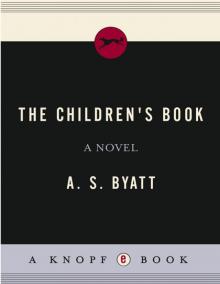 The Children's Book
The Children's Book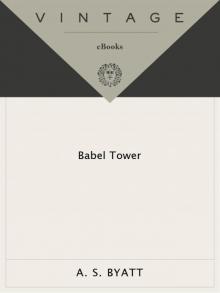 Babel Tower
Babel Tower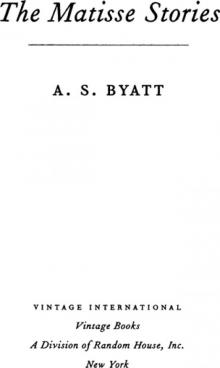 The Matisse Stories
The Matisse Stories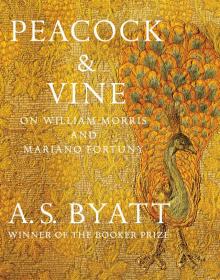 Peacock & Vine: On William Morris and Mariano Fortuny
Peacock & Vine: On William Morris and Mariano Fortuny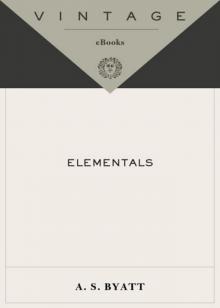 Elementals: Stories of Fire and Ice
Elementals: Stories of Fire and Ice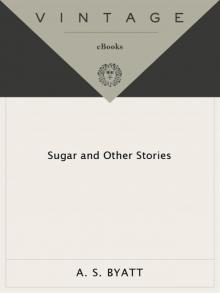 Sugar and Other Stories
Sugar and Other Stories Possession
Possession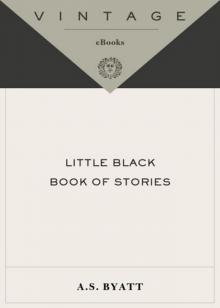 Little Black Book of Stories
Little Black Book of Stories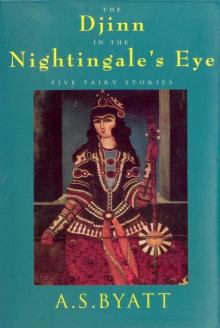 The Djinn in the Nightingale's Eye
The Djinn in the Nightingale's Eye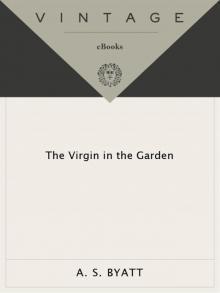 The Virgin in the Garden
The Virgin in the Garden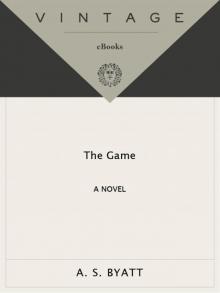 The Game
The Game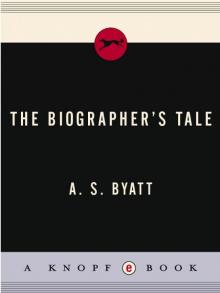 The Biographer's Tale
The Biographer's Tale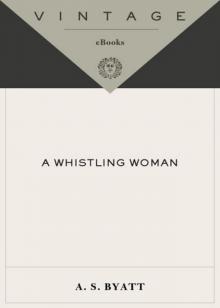 A Whistling Woman
A Whistling Woman Ragnarok
Ragnarok Angels & Insects: Two Novellas
Angels & Insects: Two Novellas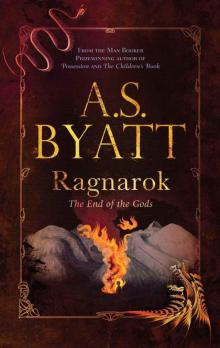 Ragnarok: the End of the Gods (Myths)
Ragnarok: the End of the Gods (Myths) Peacock & Vine
Peacock & Vine The Djinn in the Nightingale's Eye (Vintage International)
The Djinn in the Nightingale's Eye (Vintage International) Angels and Insects
Angels and Insects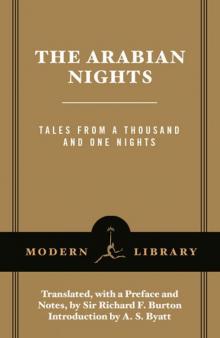 The Arabian Nights: Tales from a Thousand and One Nights (Modern Library Classics)
The Arabian Nights: Tales from a Thousand and One Nights (Modern Library Classics)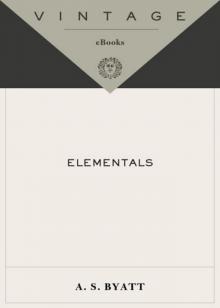 Elementals
Elementals